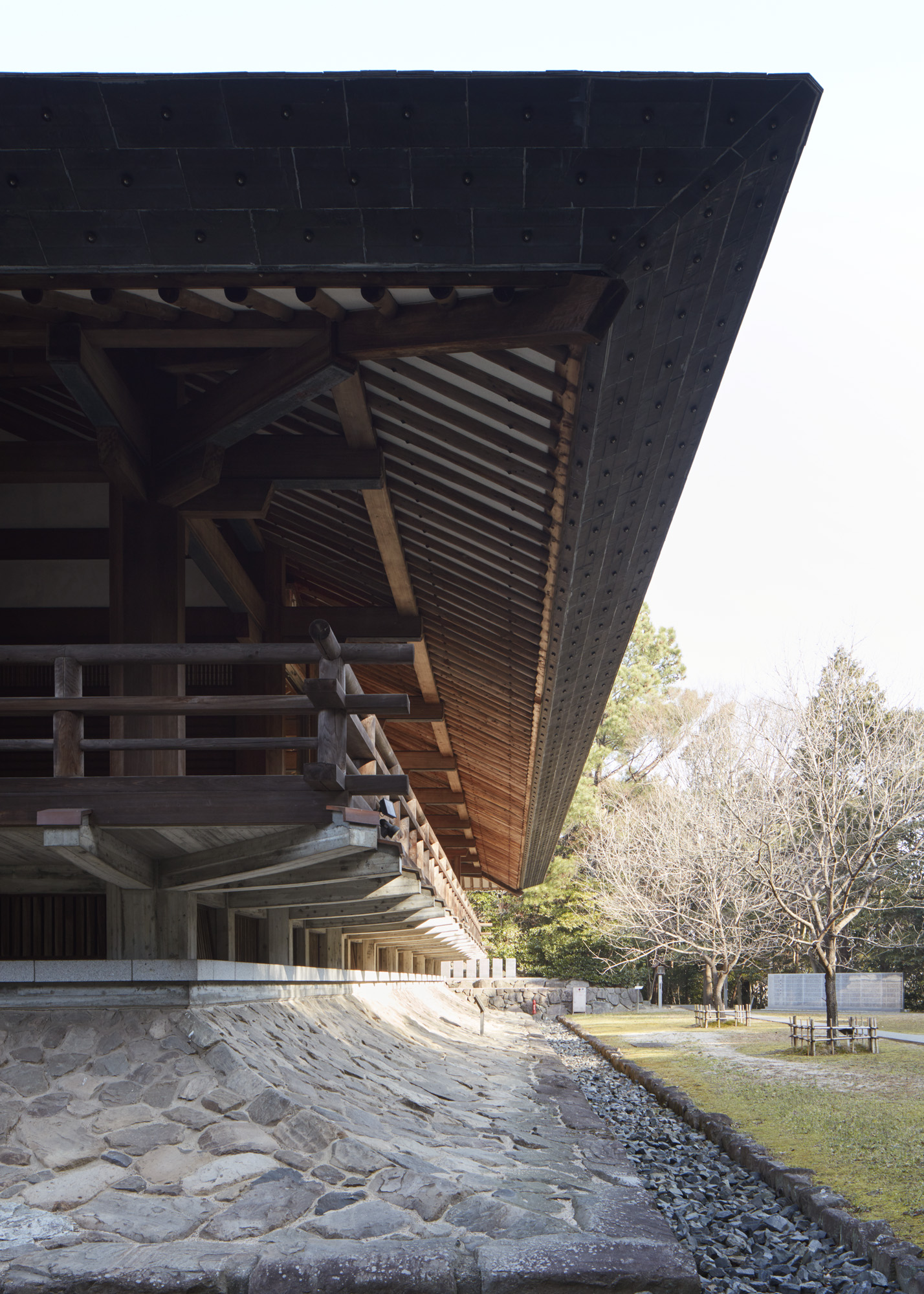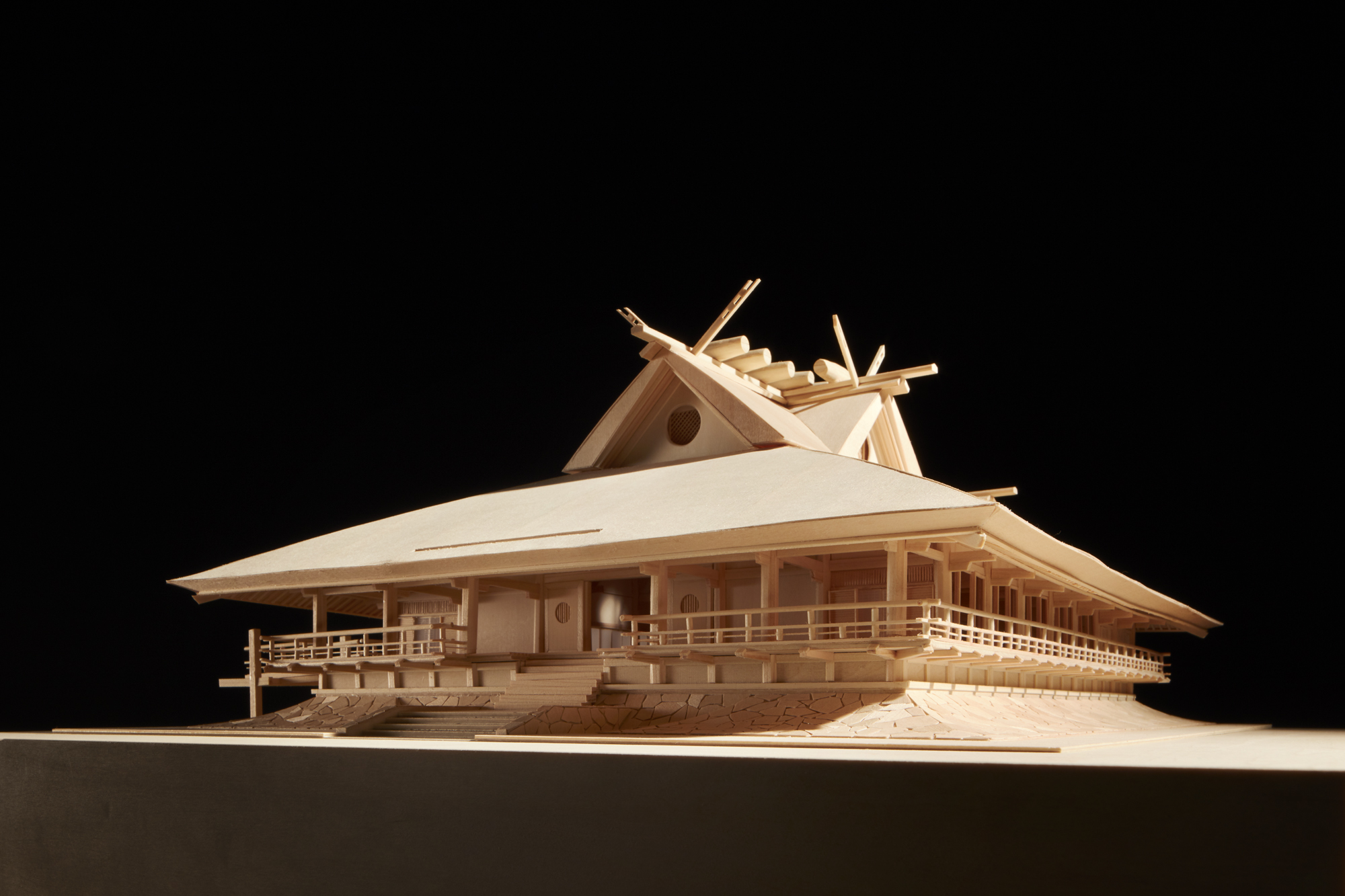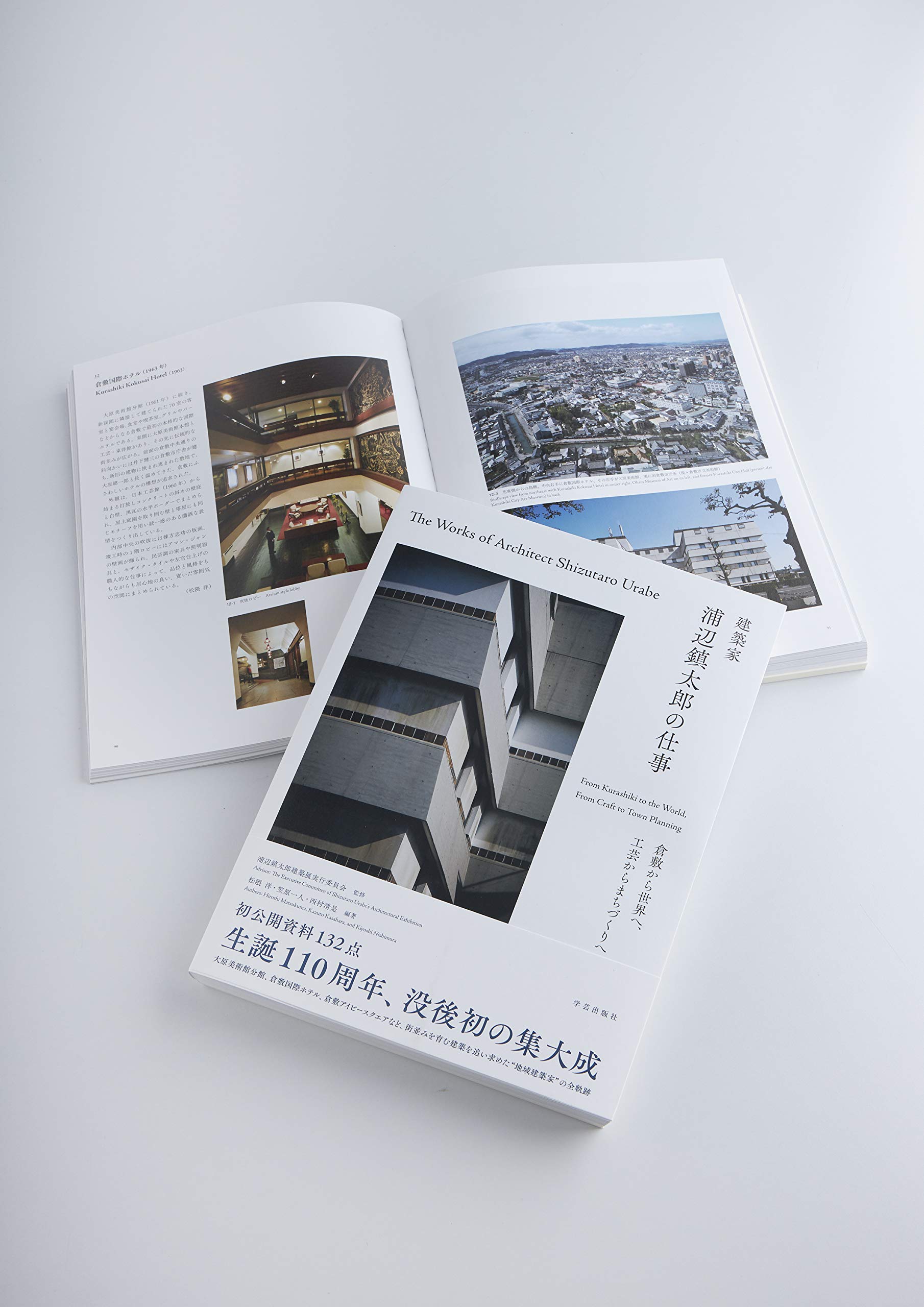ARCHI-CLE
近代における宗教建築としての黒住教・太陽の神殿
黒住教・太陽の神殿の中心建物である大教殿は、「地形と方位を見事に利用した環境設計」と評されるように、大教殿と地形から生み出される二つの軸性が、この作品の空間構成を統べている。すなわち、近世に実在した人物でもある教祖神へと祈りを捧げる黒住教固有の南北軸と、「日の縦」と呼ばれ、教義たる日の出への「日拝」、そして教祖自らが崇拝した伊勢神宮への、普遍的でアルカイックな祈りに通じる東西軸である。これら二つの軸性は、この宗教が引き受ける、現実的近世と神話的古代という、交差する二つの時間制ともいえよう。
南北の参拝軸を形成する大教殿の外観からは、伊勢神宮のみならず、敷地にほど近い吉備津神社、さらには古い民家の形式に由来する意匠が読み取れるとされる。しかし内部空間をみれば、参拝軸は伊勢神宮や吉備津神社の平入方向とは90度異なっており、垂木が並列する棟方向の奥行性と、屋根勾配を内部から見上げる垂直性が、人々に開かれた内部空間としての近代的なパースペクティブを形成する。その空間的特質はいわば、人間社会の実践的倫理とも解される黒住教の平明な教義にも通じよう。一方で、東西の「日の縦」に沿って大教殿の西麓に接続する、神結館の下階から上階への階段の構成は、より情緒的で非視覚的な性格をもつ。「外光の入らない、比較的暗い参道」と評されるこの階段は、論理以前の身体感覚を触発する。浦辺自身も日本古来の宗教空間について、「暗さっていうのは神道にもあるでしょう、あの暗さは。(中略)世の中のもの一切見えなくなって、音だけ…。(中略)一番神聖なときは目に見えないんだ」と述べるように、細かく分節され低く重なり合う水平屋根は、「音だけ」という状況、さらには音すら聞こえない静寂という、抑制された空間表現をもたらす。このように、神結館の水平屋根と、大教殿の勾配屋根には、それぞれ地勢的な凹部の暗がりと凸部の明るみ、宗教的神聖さと倫理的教義、人々の集会と神との対面、祈りに前後する静穏と高揚などが、近代性と様式性という対比的な建築表現をまとい、多義的に重なりあう。
「建築家 浦辺鎮太郎の仕事 倉敷から世界へ、工芸からまちづくりへ」学芸出版社より
朽木 順綱(大阪工業大学准教授)
構造担当 / 塩路建築事務所
竣工日 / 1974年11月
構造・構法 / RC造、S造
敷地面積 / 293,318㎡
建築面積 / 1,324㎡
延床面積 / 2,524㎡



 写真 / フォワードストローク
写真 / フォワードストローク

『建築家 浦辺鎮太郎の仕事 ―倉敷から世界へ、工芸からまちづくりへ』
浦辺鎮太郎建築展実行委員会 監修/松隈 洋・笠原一人・西村清是 編著
B5変判・320頁・3600円+税
学芸出版社
大原美術館分館や倉敷国際ホテルなど、実業家・大原總一郎と共に倉敷の伝統・風土と対話し、地域主義を実践した初期。そして晩年、横浜での仕事に代表されるポスト・モダン時代の自在な造形まで。約300点に及ぶ実作から主要37作品を厳選し、初公開図面やスケッチ132点も収録。身の丈にあう建築を求め続けた建築家の全軌跡。英訳も全文収録。
The Kurozumi-Kyo's Shrine of the Sun as Religious Place of Modern Architecture
The Daikyoden prayer hall is the central building of Kurozumi-Kyo's shrine of the sun(Hinomiaraka), and as it is praised as "an environmental design that makes excellent use of topography and orientation", the two axes created by the prayer hall and the topography control tis spatial composition. In other words, those are the north-south axis unique to Kurozumi-Kyo that dedicates prayers to the founder of the religion as a god, who is a person who actually existed in the early modern times, and the east-west axis that aligns with the "daily prayer" to the rising sun, a doctrine known as "Taste(the Verticality of the Sun)," and the universal and archaic prayer to Ise Jingu, which the founder himself worshiped.
From the external appearance of the prayer hall, which forms the north-south worship axis, a design derived from the styles not only of Ise Jingu, but also of Kibitsu Shrine near the site, and even of the traditional Japanese houses can be read. However, as for the interior space, the worship axis is 90 degrees different from that of Ise Jingu and Kibitsu Shrine, which are accessed from the longitudinal side, and the depth in the direction of the ridge in which the rafters are arranged in parallel and the verticality of the roof slope seen from ineide form a modern perspective of an interior space open to people. Its spatial caracteristics can relate to Kurozumi-Kyo's plain and clear teachings, which are also unaderstood as practical ethics for human society. On the other hand, the compotion of the stairs from the lower floor to the upper floor of the Shinyukan buildings, which form"Tatae"in the east-west direction, has a more emotional and non-visual character. The stairs, which is described as a "relatively dark approach without daylight", evokes pre-logical bodily sensations. As Urabe himself also said about ancient Japanese religious spaces, "Darkness is also in Shinto, that darkness…with nothing in the world being seen, but only heard… the most sacred is invisble", the finely segmented horizontal roofs overlapping with each other at low heights create a suppressive spatial expression with the "only-sound", condition, and then silence in which not even a sound can be heard. Thus, at the horizontal roofs of the Shinyukan building and the sloped roof of the Daikyoden prayer hall, the darkness in a topographical depression and the lightness of a hall, religious holiness and ethical doctrines, gathering by people and meeting with gods, the serenity and excitement before and after prayers, etc. are dressed in contrasting architectural expressions of modernism and toraditional styles, overlapping with each other in multiple meanings.
「The Works of Architect Shizutaro Urabe From Kurashiki to the World From Crafts to Town Planning」
Gakugei Shuppansha
Yoshitsuna Kutsuki(Associate Professor, Osaka Institute of Technology)
Translation: Fraze Craze Inc.
Structural Engineer / Shioji architect office
Year / 1974
Main Structure and Construction / reinforced concrete construction, steel construction
Building area / 293,318㎡
Building scale / 1,324㎡
Total floor area / 2,524㎡



 Photo / Forward Stroke inc.
Photo / Forward Stroke inc.




